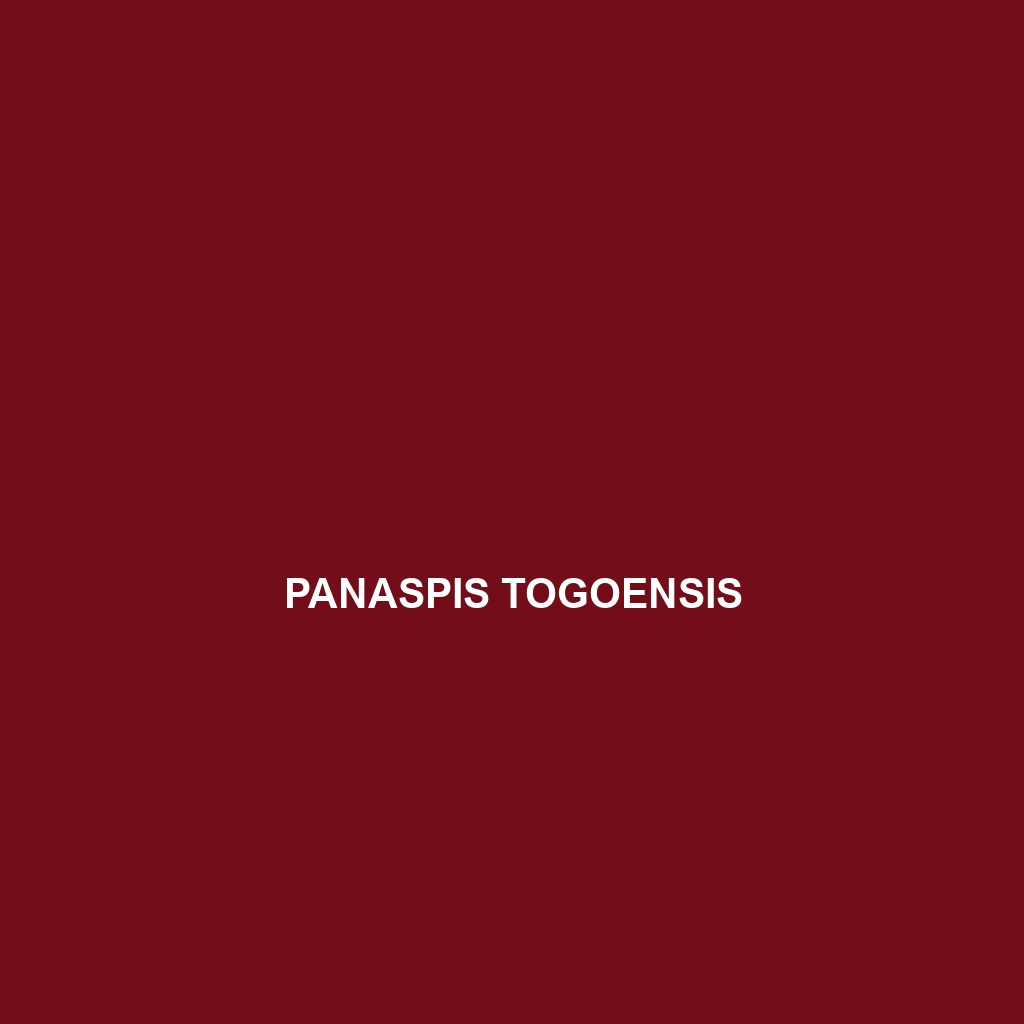Common Name
Panaspis togoensis
Scientific Name
Panaspis togoensis
Habitat
Panaspis togoensis, commonly referred to as Togo skink, occupies a variety of habitats primarily in West Africa, particularly in Togo and Ghana. This species is predominantly found in savannas and tropical rainforests, where the humidity and temperature create a conducive environment for its survival. The warm climate of these regions, characterized by wet seasons and dry spells, supports a diverse insect population that the Togo skink feeds on. These reptiles are often located in areas with dense undergrowth, which provides cover from predators and a relatively stable microhabitat.
Physical Characteristics
Panaspis togoensis is known for its elongated body and smooth, shiny scales. Adults reach lengths of approximately 15 to 20 cm, with females often being slightly smaller than males. The dorsal coloration is typically a blend of earthy tones, such as browns and tans, which act as camouflage against the forest floor. One distinctive feature of this skink is its small limbs, which give it a more streamlined appearance, allowing it to burrow easily into the soil or leaf litter. The ventral side is lighter, usually closer to a cream color, which aids in its concealment from aerial predators. The Togo skink also has a relatively flat head, adding to its unique physical profile.
Behavior
The behavior of Panaspis togoensis is largely influenced by the environmental conditions of its habitat. This species is primarily diurnal, meaning it is most active during the day, often basking in the sun to regulate its body temperature. Social interactions among individuals are minimal; however, males can be territorial during the mating season. Notably, their courtship involves a series of intricate displays and movements that may include head-bobbing and body twists. During the hotter midday hours, these skinks retreat to their burrows or under leaf litter, showcasing a behavior adapted for thermoregulation.
Diet
Panaspis togoensis is classified as an insectivore, primarily feeding on a diet consisting of various insects such as ants, termites, and other small arthropods. The skink hunts actively, using its keen eyesight to locate prey. It employs a quick strike to capture insects, showcasing its agility. Its feeding habits are essential for controlling insect populations within their habitat, contributing to the ecological balance of the ecosystem.
Reproduction
The reproductive cycle of Panaspis togoensis occurs during the rainy season when conditions are optimal for offspring survival. Mating typically takes place in early summer, with females laying clutches of eggs in concealed locations. The gestation period is around 30-60 days, after which the female lays between 4 to 8 eggs. Parental care is not provided after laying, as the eggs are left to incubate in the warm, humid soil. The hatchlings are miniature versions of adults and are independent from birth.
Conservation Status
Currently, the conservation status of Panaspis togoensis is categorized as Least Concern by the International Union for Conservation of Nature (IUCN). Despite this designation, the species faces threats from habitat destruction due to agricultural expansion and urban development. Conservation efforts are crucial to ensure their habitats remain protected and to counteract diminishing numbers attributed to environmental changes.
Interesting Facts
One interesting fact about Panaspis togoensis is its remarkable ability to change color slightly when disturbed, a natural defense mechanism that aids in camouflage. Additionally, unlike many other reptilian species, these skinks have a unique adaptation of being able to partially regrow their tails after losing them—an ability that helps them escape predation. Such adaptations highlight the evolutionary advantages that this species has developed in its response to environmental pressures.
Role in Ecosystem
Panaspis togoensis plays a vital role in its ecosystem, functioning as both a predator and a prey species. By consuming various insects, it helps regulate insect populations, which can otherwise become pests affecting plant life. In turn, the skink serves as food for larger predators such as birds and small mammals, contributing to the food web dynamics. This species’ interactions within its habitat emphasize its importance in maintaining ecological balance and biodiversity.
